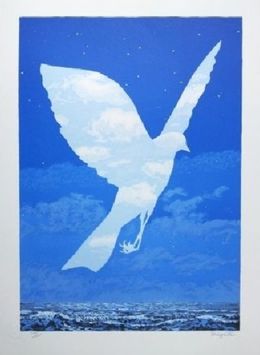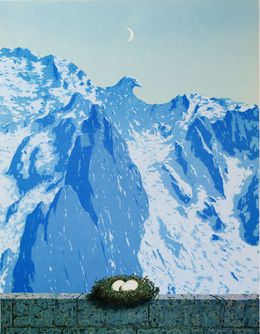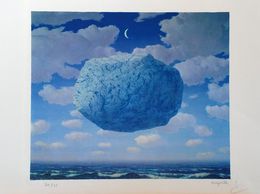



Les menottes de cuivre
René Magritte
Sculpture - 49 x 16 x 13 cm Sculpture - 19.3 x 6.3 x 5.1 inch
$22,616




Les Valeurs Personnelles
René Magritte
Print - 58 x 78 x 0.2 cm Print - 22.8 x 30.7 x 0.1 inch
$1,624


Le Chef-d'Oeuvre ou les Mystères de l'Horizon
René Magritte
Print - 45 x 60 x 0.1 cm Print - 17.7 x 23.6 x 0 inch
$905













Un peu de l'âme des bandits
René Magritte
Print - 60 x 45 x 0.3 cm Print - 23.6 x 17.7 x 0.1 inch
$812
















La Trahison des Images (Ceci n'est pas une pipe)
René Magritte
Print - 45 x 60 x 0.1 cm Print - 17.7 x 23.6 x 0 inch
$905





















Un peu de l'âme des bandits
René Magritte
Print - 60 x 45 x 0.1 cm Print - 23.6 x 17.7 x 0 inch
$905

Everything in my works stems from the feeling of certainty that we actually belong to an enigmatic universe.
Biography
René François Ghislain Magritte (1898-1967) was a Belgian artist. His childhood was marked by the death of his mother, who killed herself, but also by his meeting of Georgette Berger during his teenage years, whom he later married and who became his only muse.
He moved to Brussels in 1915 and produced his first impressionist paintings. He started his studies at the Royal Academy of Fine Arts in Brussels and discovered cubism and surrealism. He started working as a designer in a wallpaper factory, and then as a freelance graphic designer. In Brussels, he befriended Belgian surrealists such as Goemans and Nougé.
He moved to Paris in 1927, where he met some of the most prominent writers and artists associated with the surrealist movement: André Breton, Luis Bunuel, Salvador Dali, Paul Eluard, Joan Miró... Certain differences of opinion with the surrealist group drove him to return to Belgium, where he became the leader of the movement. His anxiety over the war that he felt was coming reinforced his attachment to the surrealist thinking, but also his political involvement.
René Magritte was interested in the difference between objects and their representation. His body of work explores the mysteries we perceive from various aspects of everyday life, using sometimes language, other times theatrical settings to display bizarre objects. He used familiar objects in his paintings, encouraging us to change our perception of the most common things, by bringing our subjectivity into the equation.
His dreamlike style earned him worldwide recognition starting in the 1960s. His works have been exhibited at the Museum of Modern Art in New York, the Art Institute of Chicago, the Boijmans Van Beuningen Museum, and the Centre Georges Pompidou.
Nationality
Categories
Artistic movements










